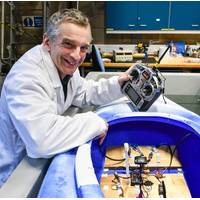
@ SAMS, Science + Autonomy = Answers
seasonal sea ice coverage isn’t that well understood.That’s because monitoring arctic areas during cold dark winters isn’t easy, so data is sparse and usually only obtained in summer. In 2018, SAMS was part of a group that looked to change that. It went into the Norwegian arctic Barents Sea in January (24-hour darkness), April and July (24-hour daylight) - something no one had done in that area in a single year - to gather data on cruises using research vessels (the University of Tromsø’s Helmer Hanssen and British Antarctic Survey’s RRS James Clark Ross). To
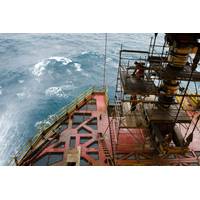
Oil Exploration Is Ramping Up Off Norway
this year compared to 36 wells drilled the previous year, the Norwegian Petroleum Directorate said on Thursday.The Norwegian continental shelf still held an estimated 4 billion cubic meters (25.2 billion barrels) of oil equivalents in undiscovered petroleum resources, with two-thirds located in the Arctic Barents Sea, it added.Half of estimated undiscovered resources in the Barents Sea, however, are located north of the areas opened for petroleum activities, and it's unclear when oil firms can get access to them.(Reporting by Nerijus Adomaitis, editing by Gwladys Fouche
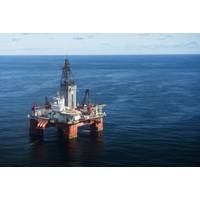
Arctic Oil 'Undrillable' amid Global Warming -UN's Ex-climate Chief
global warming is man-made.Many governments and companies favor Arctic drilling.Last month, Trump's administration began environmental reviews for oil and gas drilling in a section of the Arctic national Wildlife Refuge.In Norway, Statoil and other companies plan to keep up exploration in the Arctic Barents Sea, which is ice-free further north than other parts of the Arctic thanks to the warm Gulf Stream."This area is actually less challenging in terms of weather and waves than many other parts of Norway ... We have drilled more than 100 wells, and never had any significant accidents or discharges
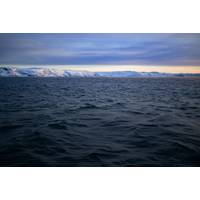
Statoil to Drill 5-6 Wells in Arctic Barents Sea in 2018
Norway's Statoil will continue to drill for oil in the Arctic Barents Sea next year even though its 2017 campaign was mostly disappointing, the company's head of exploration told Reuters on Tuesday. Statoil plans to drill between 25 and 30 wells in Norwegian waters in 2018, of which five or six are expected in the Barents and the rest will be split between the North Sea and the Norwegian Sea, which are both located further south. "We have tested a lot of potential there (in 2017), and that potential is gone, but we still believe in the overall potential of the Barents Sea
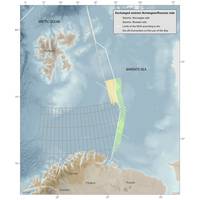
Norway, Russia to Swap Seismic Data in Oil Search
entails that both countries will exchange about the same volume of data from the Barents Sea. In May, Norway awarded 10 new licences in the so-called 23rd licensing round for new exploration areas, which for the first time is granting access to an offshore border zone with Russia in the Arctic Barents Sea. (Reporting by Stine Jacobsen, editing by Terje Solsvik
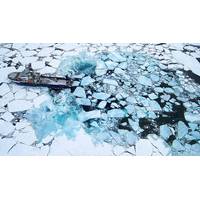
Shell Withdraws from Arctic Exploration
Arctic trying to find oil and gas deposits estimated at 20 percent of the world's undiscovered resources. Earlier this year, Norway's Statoil postponed its Arctic Johan Castberg project again and in 2012 Russia's Gazprom, together with Total and Statoil, scrapped the Shtokman gas project in the Arctic Barents Sea. Shell's London-listed shares reacted positively in early trading on Monday to the Arctic withdrawal, gaining up to 0.6 percent. The shares fell later in line with the oil and gas index. "Alaska been a bone of contention for many investors thus today's update is a positive,"

No Well Left Behind
a DST. It also deploys as part of a lower completion assembly for sand-face monitoring. After tests in the abandoned appraisal wells of Clair Field, market demand for Expro reservoir testing has grown. Wireless is now monitoring reservoir pressure in abandoned or suspended subsea wells the arctic Barents Sea and the tropical Santos Basin of Brazil. The future for CaTS technology is being developed for monitoring and control applications in advanced completions. For Expro, at least, the ultimate goal is delivering the Wireless Reservoir. (As published in the June 2015 edition of Marine
Statoil Makes Large Barents Sea Gas Find
Norwegian oil and gas firm Statoil has found between 5 billion and 20 billion cubic metres of recoverable gas in the Arctic Barents Sea, near its Johan Castberg find, the Norwegian Petroleum Directorate said on Friday. Statoil owns 40 percent of the licence while RN Nordic Oil, North Energy and Edison each hold 20 percent. By Balazs Koranyi
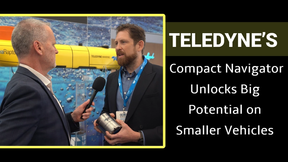
 February 2025
February 2025




